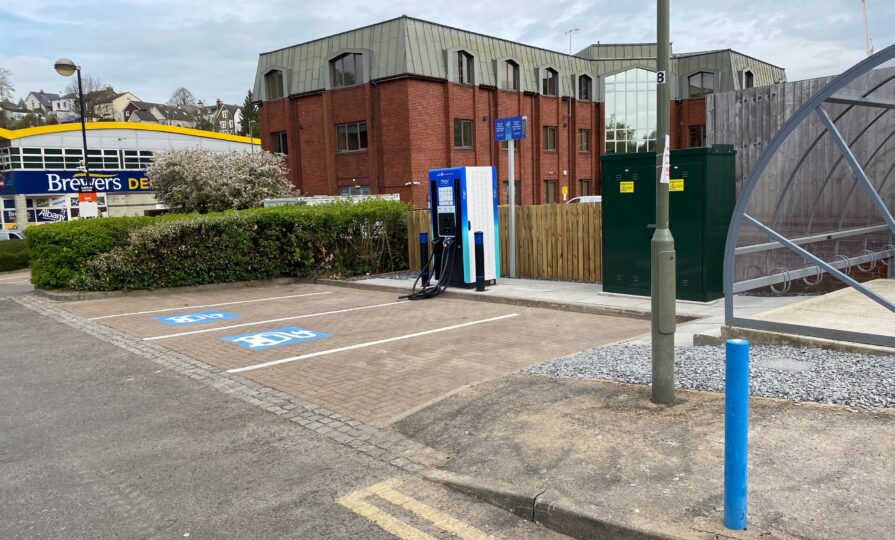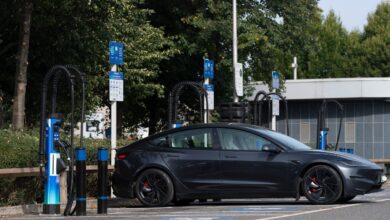The dos and don’ts of installing EV chargers at retail parks

Electric vehicle (EV) adoption is accelerating across the UK, and retail parks are uniquely suited to support this shift. With more EVs on the road, the demand for good locations to charge is paramount. With their large car parks and numerous amenities, retail parks are well suited for hosting an EV charging hub. To launch a successful charging hub at a retail park, here are some key dos and don’ts to consider.
Do: Work with an EV Charging Partner
Installing and managing chargers involves more than just hardware. Working with an EV charging partner guarantees the right expertise and support their experience in installing charging hubs at retailers will help you to identify the best methods and equipment for the site’s success. A charging partner will also help to avoid the common pitfalls listed in this article.
Don’t: Treat Chargers as Just Another Technical Project
While the chargers themselves are pieces of equipment, their role at your retail park goes beyond a simple installation project. EV charging should be seen as part of your wider offering for customers at your retail site and a contributor to your ESG initiatives. Treating it purely as a technical installation risks missing the wider picture of how EV charging enhances the customer experience.
Do: Understand Your Customer Base
Before the installation begins, think about who your customers are and how they use the site? Are visitors typically stopping for short trips, or do they spend hours browsing large box shops? Understanding the dwell times and shopping patterns will help to identify whether rapid chargers or slower fast chargers. By aligning charger types to real behaviours, you can expect a smoother customer experience and higher usage. Your EV charging partner will help you see the infrastructure from the customer’s perspective and advise on the speed and location of your chargers for optimal results.
Don’t: Over-Install
One of the primary reasons behind this careful analysis of your customer base is to avoid the issue of over-installation. Too many EV charge points lead to waste, both in terms of capital expenditure and from the emissions created during installation. Furthermore, you do not want to use up more parking bays than necessary for chargers, since this impacts non-EV drivers. Discuss how many chargers your site needs with your EV charging partner.
Do: Future-proof Your Charging Infrastructure
The EV industry is constantly evolving, and the number of EVs on the road is increasing exponentially. Therefore, it is imperative to plan for future expansion and scalability. For instance, you might choose to upgrade your grid connections in anticipation of more chargers or incorporate smart charging technologies to better manage your energy consumption. Retail sites that plan accordingly now can expand to meet the EV demands of tomorrow.
Don’t: Underestimate the Power Demands
Power availability is one of the biggest barriers in the UK for the installation of EV chargers. By working with an EV charging partner who has the connections to Distribution Network Operators (DNO) and energy providers, you can confidently assess the power capacity of your site. This opens the way to devise cost-effective solutions to an insufficient energy supply. such as smart charging and renewable energy integration.

Do: Prioritise User Experience
Reliable, easy-to-use charging is vital. Chargers should be clearly signposted and easy to operate and pay for. Your charging partner should offer multiple payment options for customers and transparent pricing. EV drivers will always return to sites that offer a convenient experience, translating into greater consistent footfall for your retail park.
Don’t: Overlook Maintenance
Ensure that your selected charging partner has a robust and comprehensive support offering. Poorly maintained infrastructure leads to frustration and reflects poorly on your site overall, potentially leading to less visitors. A clear and robust service level agreement will help you avoid this issue, alongside proactive monitoring and a responsive support team provided by your EV charging partner.
Do: Show-off Your Chargers
EV charging is a highly visible way to demonstrate your ESG commitments. Be sure to demonstrate your chargers through clear signposts and your marketing. Meanwhile, your charging partner can help put your site in front of their network of EV drivers through their app and charging point maps, helping you to advertise to a new customer segment.
Don’t: Install and Forget
Charging should be integrated into your broader sustainability and customer engagement strategies. Maximise the opportunity to promote your new EV charging hub with a special promotion, integrate with your renewable energy sources, and lean on your EV charging partner to examine the usage data of the chargers to push forward your wider business goals.
EV Charging as a Retail Site Necessity
For retail sites, EV charging is more than just a convenience. It is a strategic enabler for increasing footfall and reaching new customer segments, while also boosting sustainability goals. By understanding the key dos and don’ts your chargers can deliver actionable results and act as a passive revenue generator. Early-adopters of EV charging at their site are well-positioned to become a focal point for EV drivers.
From coordinating with grid operators to selecting the right hardware and managing on-site works, EV charging installations are complex. Choosing an expert partner like Mer reduces risks, ensures regulatory compliance and delivers high-quality, future-proofed infrastructure. If you are looking to install EV charging in your retail site’s car park and want to know what else should be considered, download our latest e-guide.







